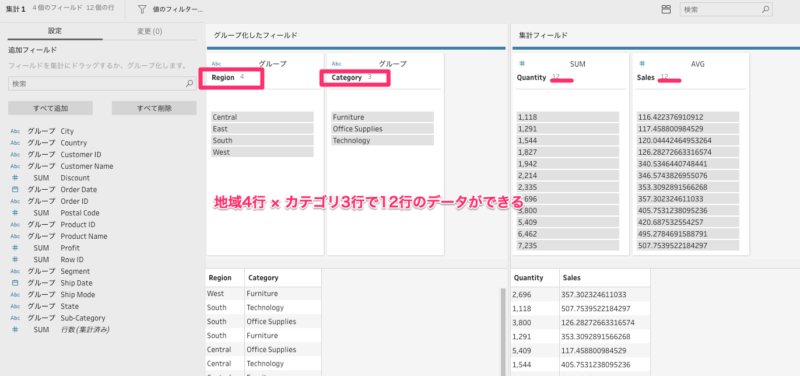
The various transformation steps within Tableau Prep are extensive and helpful we can change data types on the fly, trim out white space or specific characters from a string, group and replace similar values (e.g. This snazzy visual representation of your data is available throughout Tableau Prep: You can even click on a result within a pane and see how that value is associated to the other fields within your connected data set/input. These features are extremely helpful for spot checking your data. xlsx outputs:įollowing the journey of this freshly combined set of order data, the next step in the flow is a cleansing of NULL Order ID values:Ĭan we take a minute to appreciate the tiny bar charts and data review elements available in the profile pane? These are some of my favorite features of Tableau Prep because it’s very easy to see distinct values and their respective counts within their respective fields.
#TABLEAU PREP DESKTOP FULL#
Using the Matching Pattern, we can limit the files included in this union by filename, which is very useful for filtering out a specific file out of a folder full of generated. I’m a big fan of this layout:įor this input step, we’re combining four years’ worth of orders_south.csv files using a Wildcard union. Here’s an example of this secondary window when clicking on a data set (input) you get a nice overview of the fields, field types and some sample values for each. Clicking on an element brings up a secondary set of profile panes with more information, tailored to the function of the step. Here’s a birds-eye view of a Superstore “flow” in Tableau Prep: Tableau Prep has a simple and clean user interface that looks and feels like the final form of Tableau Desktop’s data source screen. In this blog post, I’ll be providing my thoughts on some of the initial features available in the latest beta version of Tableau Prep, highlighting my favorite things along the way. As is tradition, Tableau Prep is just as intuitive and minimalistic as Tableau Desktop and Server – and, of course, it plays extremely well with both. Tableau Prep is a personal data preparation tool that empowers the user with the ability to cleanse, aggregate, merge or otherwise prepare their data for analysis in Tableau. It’s called Tableau Prep ( Project Maestro when in beta) and yes, it is awesome. Then add a couple of more files and rerun the workflow to get the latest values.Guys and gals, I’m excited – my favorite data visualization tool, Tableau, now has a data preparation and transformation tool. For these files, we will create a workflow for the latest month. The reason we need this is to create a date field which will be seen in the steps. If the data is being fed every month from a local file (in a shared folder), the file must have a month and year identification. If data is stored in the database, there must be a date field that can specify what month and year the data is for. ** One very important requirement to provide a solution is the requirement of a timestamp that can provide the month and year information. We are using some of the files that we used in the other blog to demonstrate the features here. It could also skip a couple of months where no events are planned.įor the purpose of this blog, as mentioned before, we will use local files to demonstrate the concept which can applied elsewhere. ** The data might not get populated every month. The solution would be to generate a Date Placeholder for the latest month available and filter only to extract that month’s data.

Based on those events, the Sales and IT resources are assigned.ī) A Prep Builder flow needs to be created to only generate the latest month’s data which will be used in the Marketing Dashboard. So, we will discuss the alternate solution for Prep users.Ī) The Marketing team gets a monthly data feed with all the events in a database. Most of that is true, but all the Tableau Desktop functions cannot be exactly replicated in Prep. The general assumption for Prep users is that if Tableau Desktop can do, Tableau Prep will be able to do the same things because it is an ETL tool with much better data cleaning and data filtering operations.


The same requirement is needed in Tableau Prep Builder. In one of the other blogs, we had seen the latest file refresh using Tableau Desktop. Here, will be tackling a very simple problem through a use case. This will be one of the first Prep Builder blogs on our website after our ‘A Practitioner’s Guide to Prep Builder’ book release. It is also very satisfying to see many customers using Prep for their data repair needs instead of going for expensive ETL tools. The TC 2019 showed improvements and new features in the tool. Prep Builder has slowly evolved into a better ETL tool since the last 2 years. Tableau Prep Builder (Maestro → Prep → Prep Builder) was created as a very simple data preparation/transformation tool to cater the daily data needs of Tableau developers.


 0 kommentar(er)
0 kommentar(er)
